The arrival of early spring always brings a chatter of noise outside our windows. As we begin to venture out into the warming sun, birding offers an exciting exploration for folks of all skill levels. Looking to spot a few new birds this year? Here are eight you might see along the Crooked River near the Land Trust's Ochoco Preserve.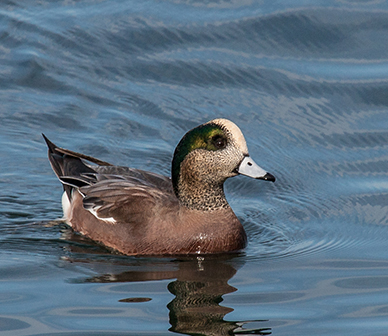
Wetlands along the Crooked River are home to this special duck. The white patterning on male American wigeons resembles a bald head leading many to refer to these ducks as a “baldpate.”
Length: 16-23.2”
Most commonly seen: Year-round
Likelihood of seeing them: Common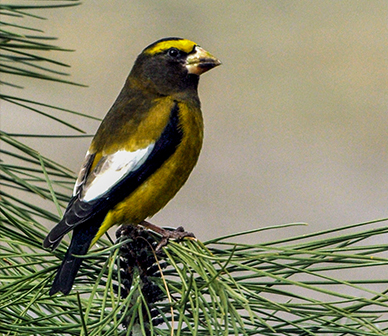
This species with striking plumage migrates irregularly: choosing to stay in northern coniferous forests year-round, or migrating farther south if northern cone crops are poor. In the West, these birds migrate to lower elevations in winter.
Length: 7.75-8.5"
Most commonly seen: August-May
Likelihood of seeing them: Occasional to Rare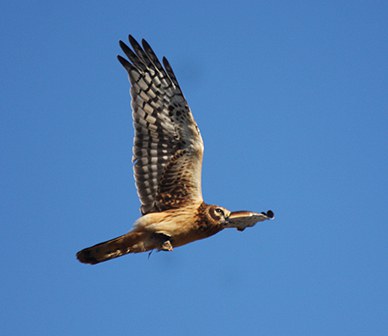
These slender raptors might be confused for owls, though they are not related. You can find them hunting in low flight above open fields and wetlands. Males fly in impressive barrel rolls as a mating display at their breeding grounds.
Length: 18-20”
Most commonly seen: March-November
Likelihood of seeing them: Uncommon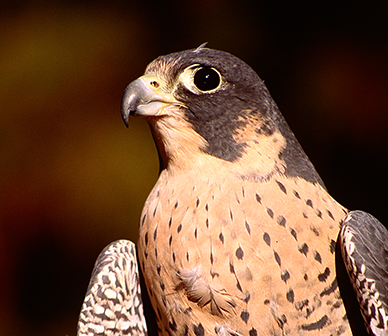
These fast fliers are fierce predators often flying more than 30mph and reaching nearly 70mph when swooping in on prey. Look for these birds perched high on cliffs.
Length: 14.2-19.3"
Most commonly seen: August-May
Likelihood of seeing them: Occasional to Rare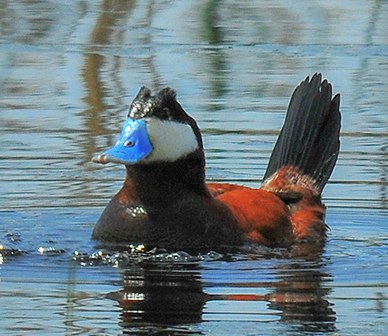
Male ruddy ducks have iconic bright-blue beaks in the summer. You can find them in lakes and ponds. During mating season, you might even be able to see a male Ruddy duck creating a ring of bubbles around itself in the water as it aggressively beats its bill against its chest.
Length: 13.8-17"
Most commonly seen: March-November
Likelihood of seeing them: Common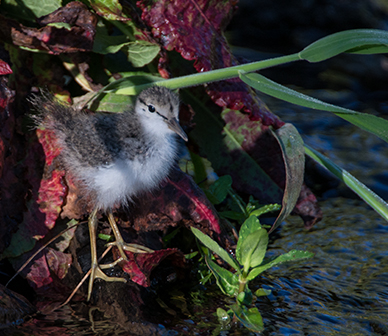
Possibly one of the most memorable shorebirds, the spotted sandpiper has a characteristic teetering motion giving it the nickname “tip-tail.” Look for them teetering just about anywhere near streams, lakes or ponds.
Length: 7-7.9"
Most commonly seen: March-November
Likelihood of seeing them: Abundant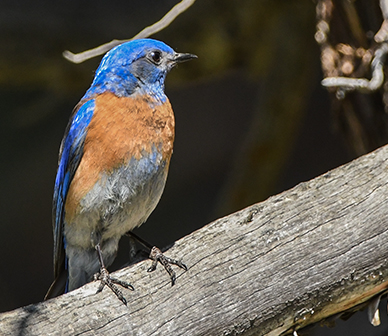
Bluebirds are cavity nesters, raising their young in holes in trees. You can find them on the edge of woodlands or perched on fences or posts. Many bird species compete for limited cavities. If you have a bluebird box, make sure non-native starlings haven’t moved in!
Length: 7-7.75"
Most commonly seen: March-May
Likelihood of seeing them: Occasional to Rare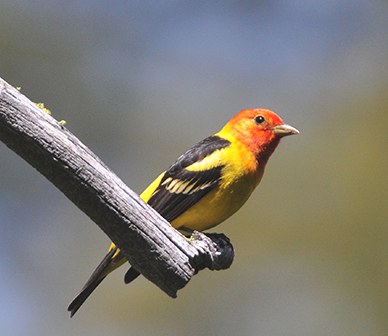
These are the most northern-reaching of any tanager. Unlike many other birds, Western tanagers get their red pigmented feathers from insects in their diet. You are more likely to find Western tanagers in open conifer forests.
Length: 6.3-7.5"
Most commonly seen: March-November
Likelihood of seeing them: Uncommon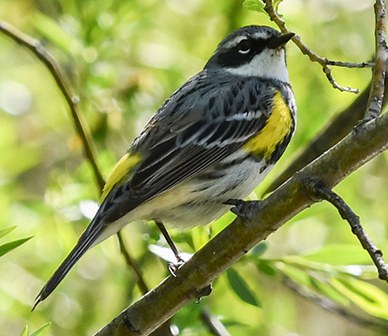
Most warbler species eat insects, but these brightly colored warblers are able to digest wax-coated berries. This adaptation allows them to winter further north than other species. Look for Yellow rumped warblers on the end of tree branches in conifer forests.
Length: 4.7-5.5"
Most commonly seen: March-November
Likelihood of seeing them: Abundant
Land Trust Preserves provide excellent opportunities for new and seasoned birders to watch birds in a variety of habitats. Take a hike of your own or join us on a guided Land Trust bird walk.
Learn more:
- Volunteer to help survey birds!
- Explore Ochoco Preserve
- Download your own Crooked River Birds Checklist
- Visit birding hot spots Camp Polk Meadow Preserve or the Crooked River Wetland Complex
- Learn more about the Prineville Bird Club
- Join us for a spring bird walk! Take in the season while you can.
Sources:


